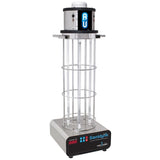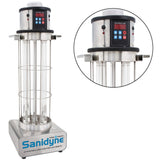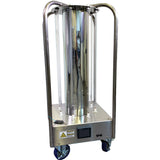Buying Advice for Ultraviolet UVC Germicidal Lights and Fixtures
Posted by Nick on for ProLampSales
Since the COVID-19 outbreak, there has been a proliferation of ultraviolet UVC products. While there are many good companies out there using high-quality products and effective designs, there has also been a flood of low-quality junk and even completely fake UVC devices.
As of this writing, there are few official standards for UVC germicidal lighting products, either bulbs or fixtures. Many companies have been manufacturing specialty ultraviolet lamps, ballasts, and luminaires for decades.
However, it is not easy for the average consumer, business owner, or public servant to wade through all the fakes, low quality junk, and under-powered equipment to find what will work for their application, either air/surface disinfection or water purification.
Few Standards
The lack of standards in the industry is seen as a problem by some, but it has only become magnified over the last few months.
For decades, germicidal lighting has been used in medical settings like hospitals and clinics, in research institutions testing kill rates and dosages of various pathogens, and by the general public in a limited range of applications.
Many equipment manufacturers in the past would buy components (UV bulbs, germicidal ballasts, etc.) from well-established manufacturers like Osram, Philips, and Ushio. Other equipment manufacturers would produce their own specialty bulbs, but the technical requirements of these applications required high levels of competency and quality.
But since the coronavirus pandemic, low quality products have flooded marketplaces like Amazon and eBay, with sellers offering "UVC LED" bulbs and fixtures for very low prices, while over-promising on results.
In several cases, these Chinese-made "UVC" bulbs have been proven to be fake, not emitting any ultraviolet light at all. But many businesses and homeowners are now relying on ineffective, fake products for disinfection and peace of mind.
Some Buying Guidelines
In the last few months, the International UV Association has published some guidelines for governments, businesses, and consumers looking to purchase UV germicidal equipment.
We'll cover some of the same ground they do, but their advice is well worth reading.
Brand Credibility
EPA Registered
This will not be true for all UVC equipment manufacturers, even high-quality ones, but checking the US Environmental Protection Agency's list of Registered Pesticide Device-Producing Establishments is a good start.
Two of our biggest ultraviolet germicidal, curing, and component companies (American Ultraviolet and Atlantic Ultraviolet) are both registered with the EPA, and both produce high-quality medical/commercial/industrial grade UV equipment.
Indicators of Product Quality
Things like warranties, industry approvals/listings, and high-quality components should be checked for.
While most UVC equipment is not UL or ETL listed or approved, many of the components can be. High-quality device manufacturers use good, brand name UV ballasts from companies like Philips Advance, Fulham, Robertson, and others, who go through industry testing and approval processes.
It can mean a big difference when a company will give a 3-5 year warranty on their equipment, and when many of the components used in it have their own warranties.
In the near future, industry standards specifically for UVC will be developed, and that will be an additional indicator of quality and accuracy.
Made/Assembled in the USA
While most lighting is now manufactured outside of the United States, some companies still produce here, including Atlantic Ultraviolet.
And other companies assemble and test their devices in factories in the USA, even if they purchase components from established lighting manufacturers who produce in Japan or Europe, for instance.
There is also more recourse buyers have when a company in the USA stands behind a product. Communication is usually easier than with a foreign company, and shipping is less of a risk in terms of time and breakage.
Verifying UVC Output
Finally, you can do all the checking of warranties, component quality, and manufacturing processes you want, but how can you verify the light you have is emitting true UVC wavelength?
Trust, but verify.
Here are a couple of relatively low-cost tools to help verify if a device is putting out 254nm UVC light.
Dosimeter
The least expensive option is dosimeter cards. These cards change color as they are exposed to ultraviolet germicidal light.
They are mainly intended to be used for ensuring enough dosage has been applied to a surface to reach certain thresholds.
However, in this new era of rampant fake UVC lights, they are a great way to test whether a bulb or equipment is working as intended at all.
UVC Meter
More expensive than dosimeter cards is a UVC light meter, which measures the exact µW/cm2 at a certain distance.
While these meters are overkill for simply testing a device, they are great when attempting to measure dosages and various distances, like in a containment box or with a mobile room purifier.
- Posted in Ultraviolet Light
Featured Products (View All)
0 Comments




